Growing up on one of the provinces here in the Philippines, I became familiar with the celebrations that we do annually. And one of it is festivals or fiesta. In our province, Isabela, we have a festival called Bambanti festival. Bambanti” is the Ilocano term for scarecrow, the watch guards of the fields and farms. The usual things you’ll see in this kind of festival are parades of giant scarecrows, floats, street dancing, marching bands and a lot of people from different cities, tourists and celebrities. During the night there will be competitions like pageant, talent shows and concert.
The festival started and got institutionalized around the early months of 1997. It was made to celebrate and represent over 34 municipalities in the City of Isabela that have been one of the few with rich agricultural history. It is also to remember that the Philippines, up to this date, belongs to the few countries that could greatly provide agricultural needs, both in the international and domestic trade industries.
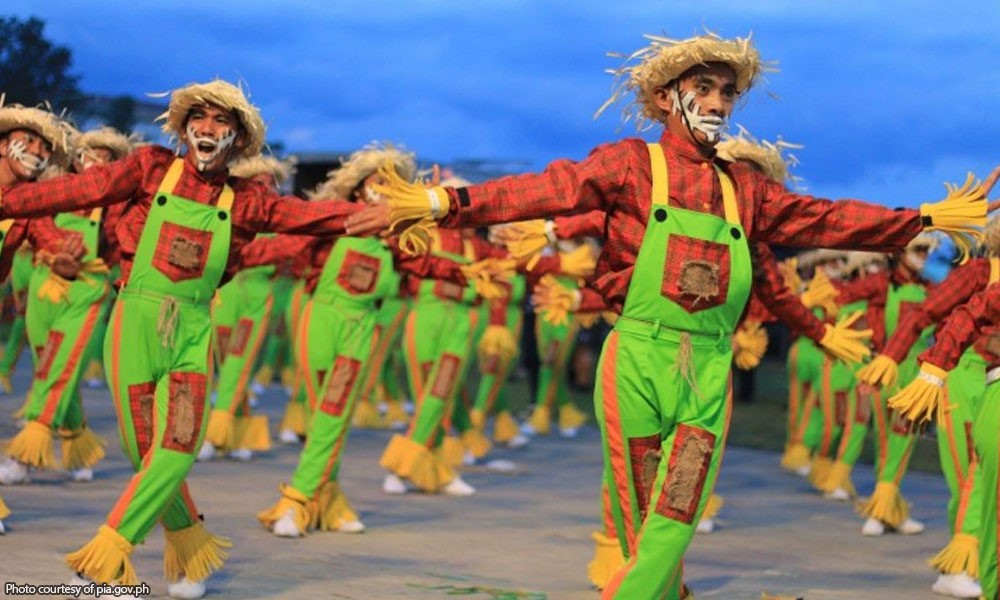
This festival is also renowned for the marvelous and colorful display of scarecrows all across the entire festival. Even mascots use the scarecrow costume. However, it’s not just for fun or something that is used because it can be seen in crop fields. It actually has a deeper meaning into it where it symbolizes or signifies different farmer’s traits such as endurance, resoluteness and diligent spirit.
The scarecrow is usually built with materials from what crops they have produced in their municipality or region. An example would be a rice crop built scarecrow competing against another built from sugar cane crops and other materials. Not only you’d see how hardworking the farmers are, but you’d also see how creative and artistic they are when it comes to designing their scarecrow model.
Filipinos are known to find ways to celebrate even the smallest things. This is seen in the numerous fiestas and festivals that happen almost every day around the country, which showcase extravagant dresses, beautiful parades, and the radiant smiles Filipinos are known for.
The fiesta, while not a uniquely Filipino tradition, is one of the main cultural and religious events in the Philippines. The celebration of fiesta, which means feast, is one of the influences of Spain that has taken root in the Philippines.
Every town in the Philippines, no matter how big or small, holds a fiesta. Traditionally, the fiesta is a period of joyful celebration for Filipinos, who cook lots of hearty food, throw open their doors to visitors, and parade in the streets. Some Filipino fiestas have evolved into elaborate, multi-day festivals, while others have kept their community roots.
There are about a hundred different fiestas and festivals celebrated in the country every year. Every town, every city, every province honors different patron saints, which means every fiesta celebration is unique and distinct. But if there is one thing in common amongst all of them it would probably be the extravagance of it all.
Every household is busy preparing for the fiesta may it be in terms of food, decoration, or invitation of guests. Filipinos love food, so you can just imagine the feast and spread available every time the town’s feast day finally comes.
Traditionally, preparations for the fiesta begin weeks before its actual day. One popular indication of a fiesta approaching is when the town begins to put up colorful stringed flags on the streets.
Towns would also begin organizing different performances, events, activities, and contests to be administered during the feast day. Visitors would also begin arriving. Plates are being passed around, bottles of alcohol are being opened, and the karaoke machine is being started up. This would go on for the rest of the day and would sometimes last until the early hours of the next day.
Now, here is a list of the most popular festivals in the country and the places where it’s being held.
Sinulog Festival, Cebu
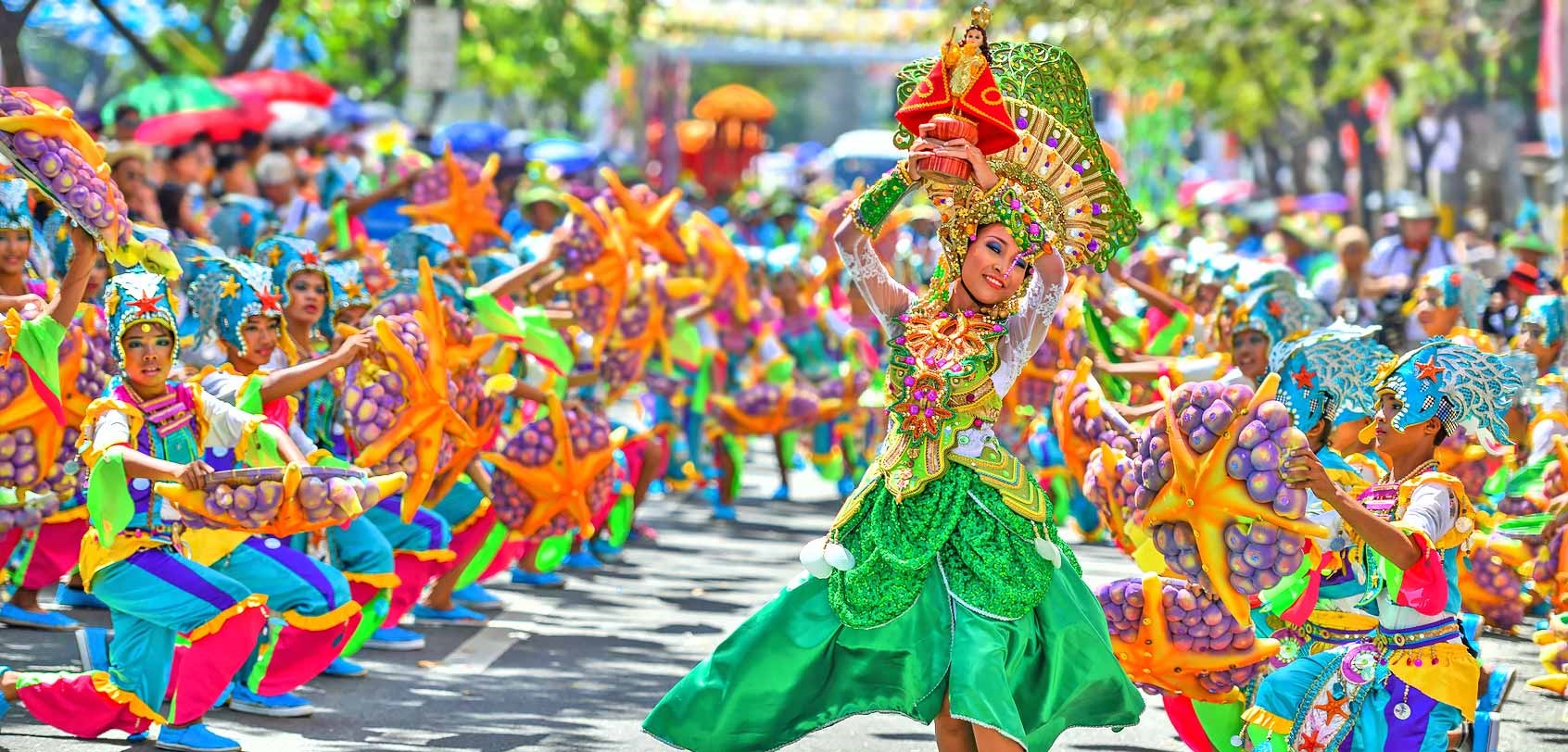
Source: https://sugbo.ph/2019/official-cebu-sinulog-2020/
Attracting millions of people every year, the Sinulog Festival in Cebu may just well be one of the biggest festivals in the country, and is surprisingly becoming even more popular each year, especially among the young people.
The word Sinulog comes from the Cebuano adverb sulog which roughly means “like Water current movement;” it describes the forward-backward movement of the Sinulog dance. The dance consists of two steps forward and one step backward, done to the sound of drums. The dance is categorized into Sinulog-base, Free-Interpretation, and street dancing. Candle vendors at the Basilica continue to perform the traditional version of the dance when lighting a candle for the customer, usually accompanied by songs in the native language.
Since the 16th century, there is great devotion to the Santo Niño in Philippine popular piety, particularly in the Visayas. Pilgrims from different parts of Cebu and the rest of the Philippines make their yearly journey to the church to take part in the procession and festival. Starting in 1980, the Cebu City government organized the Sinulog Festival and eventually gave incentives also to tribal dance groups. The first Sinulog parade was held in 1980, organized by Dávid Odilao, then Regional Director of the Ministry of Sports, and Youth Development. The parade was composed of students dressed in Knitted Filipiniana costumes, dancing the Sinulog to the beating of drums.
Masskara Festival, Bacolod
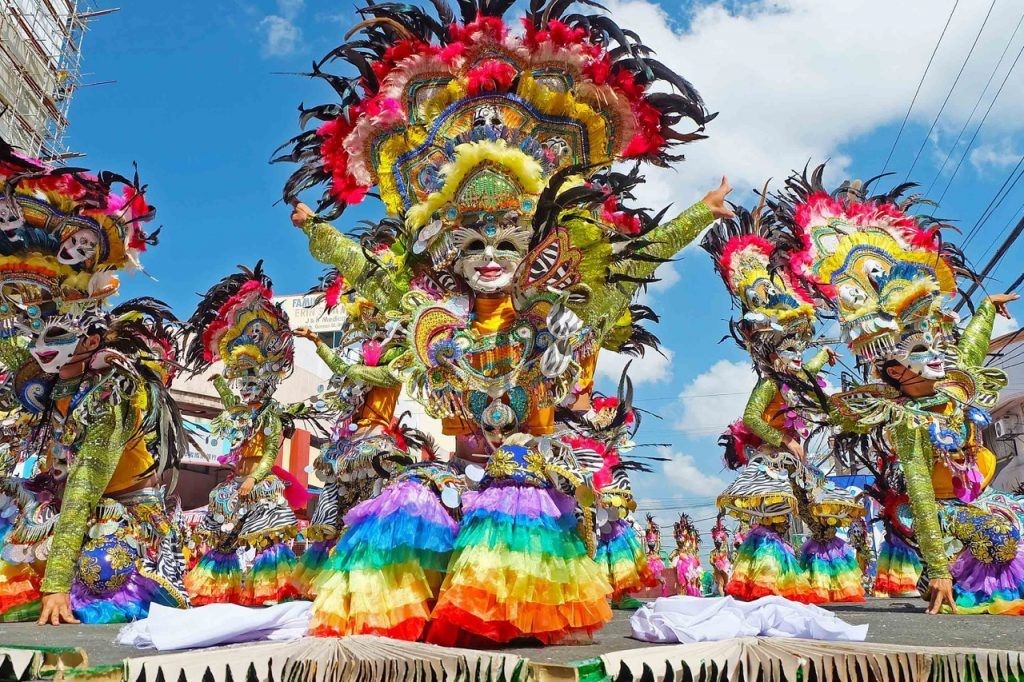
Filipinos are known to be resilient people who are able find ways to smile and jest even amidst crises and adversity. This can be seen in the history of the Masskara Festival of Bacolod, which was an answer to the city’s dwindling revenue from the sugar industry. The festival is marked by dancers donning elaborate colorful masks parading all over town, backed up by Latin-inspired drumbeats.
The word “Masskara” is a combination, coined by the late artist Ely Santiago from mass (a multitude of people), and the Spanish word cara (face), thus forming MassKara (a multitude of faces). The word is also a pun on maskara, Filipino for “mask” (itself from Spanish máscara), since it is a prominent feature of the festival and are always adorned with smiling faces, giving rise to Bacolod being called the “City of Smiles”.
The MassKara Festival can trace its roots back in the 1980s and was born out of a crisis. It was during the time when the province’s main livelihood, sugar, was priced at an all-time low because of alternatives introduced in the market. It was also the time when a tragic ferry accident happened, which carried mostly people from the province including those from prominent families of Bacolod.
To lift the spirits of the locals and bring back the smiles on their faces, the MassKara Festival was created. The smiling masks were a declaration of the people of Bacolod City that they will pull through and survive the challenges and tragedies that they are facing.
I think this is also a good example that shows how resilient Filipinos are.
Dinagyang Festival, Iloilo
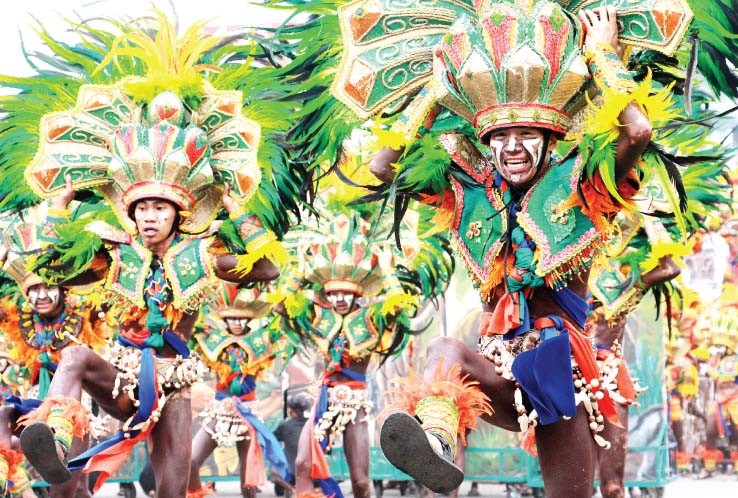
Another celebration in honor of Santo Niño, this award-winning event in Iloilo is marked by a street party celebrated with bountiful food and drinks, concerts, and a street dance competition where different districts and local schools participate. It also celebrates the traditions of Aklan Island’s indigenous Aeta people.
The Dinagyang Festival is a religious and cultural festival in Iloilo City, Philippines held on the 4th Sunday of January, or right after the Sinulog in Cebu and the Ati-Atihan Festival in Kalibo Aklan. Dinagyang was also voted as the Best Tourism event three times in a row among any other festivals in the Philippines, it is also the most awarded festival in the country, because of its legacy, popularity and innovation, it receives an honor and regarded as World Class Festival.
Panagbenga Festival, Baguio
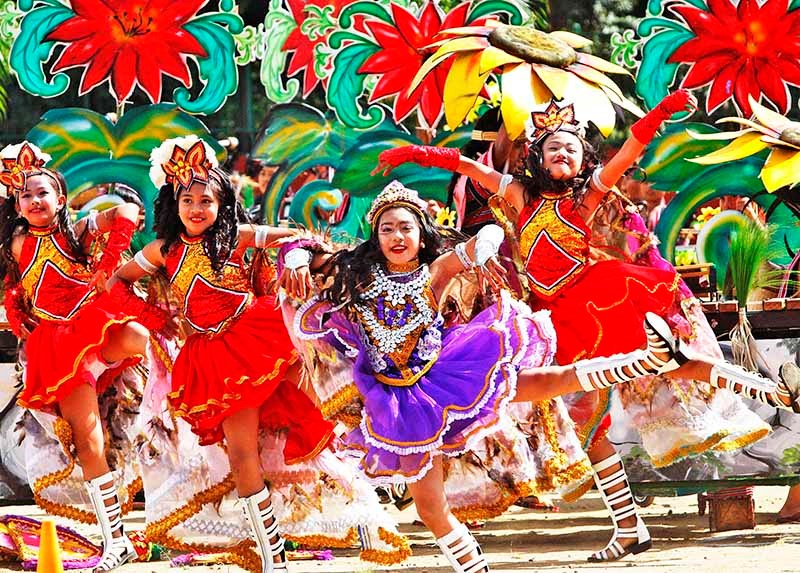
Also called the “Season of Blooming,” Panagbenga is a grand event in Baguio where giant floats adorned with flowers parade along the whole stretch of Session Road. A tribute to the city’s flower industry, it was first held after the 1990 Luzon earthquake to uplift the spirits of those who were affected by the tragedy.
Pintados Festival, Tacloban, Leyte
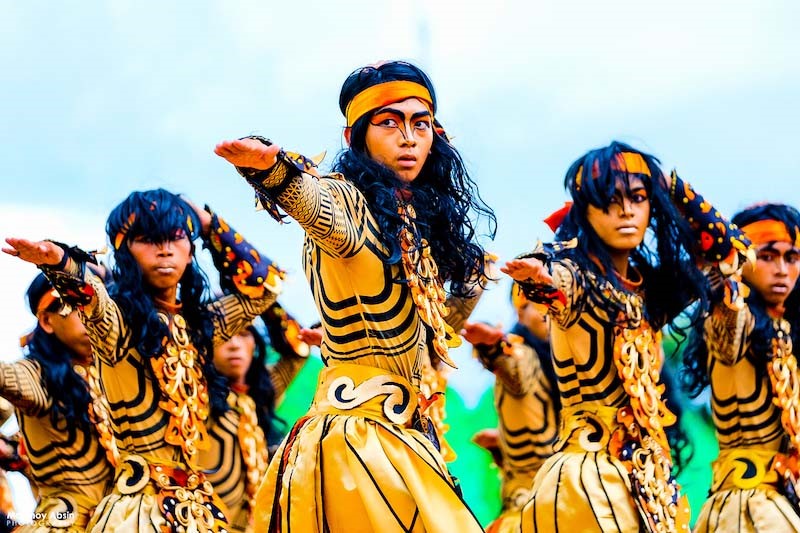
Source: https://www.beholdphilippines.com/tacloban-city-pintados-kasadyaan-festival/
The Pintados Festival of Tacloban is yet another cultural-religious festival dedicated to Santo Niño, which is filled with various activities locals and tourists would enjoy. Street dancers are painted with designs that resemble armors, to display the body-painting traditions of ancient warriors, while they parade all over town to the beat of marching bands; it then culminates with a grand dance presentation where people from all over the area participate in. The festival lasts for about a month and has been so for almost 30 years.
Pahiyas Festival, Lucban, Quezon
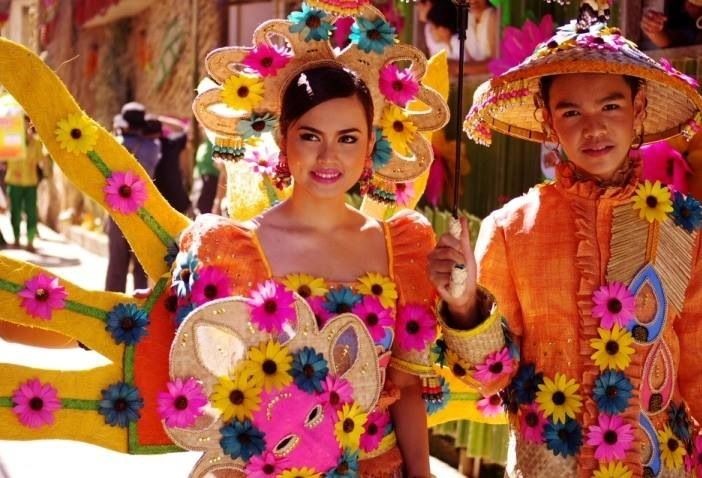
Source: https://www.hellotravel.com/events/pahiyas-festival
Probably one of the most colorful celebrations around, Pahiyas Festival in Lucban, Quezon, is dedicated to San Isidro Labrador, the patron saint of farmers. Since it is a harvest festival, houses are gilded with colorful kiping (wafer made of rice) and fresh produce that you can pick for free. These décors are then judged by town officials and are given awards before the celebration culminates.
Every May 15, the townsfolk of Lucban, Quezon, don their houses with fruits, vegetables and colorful kiping (a leaf-shaped wafer made of rice and dyed with food coloring) in celebration of the Pahiyas Festival. The word ‘pahiyas’ was derived from the word ‘payas’, which means decoration or to decorate. The reason behind such practice dates back to the 15th century, when farmers used to offer their harvests at the foot of Mount Banahaw. Over time, they brought their farm produce at the church in honor of the town’s patron saint – St. Isidore the Laborer, who is the patron saint of farmers, laborers and peasants.
During that time, farmers would bring their harvest to the town church and the parish priest would bless them as a way to give thanks to the Lord for their bountiful harvest. But as time progressed, the church can no longer accommodate all harvests. It was then agreed upon for the harvests to be displayed in the farmers’ houses instead. Thus, the parish priest would go around the community to bless their harvests.
Kadayawan Festival, Davao
Source: https://www.sunstar.com.ph/article/1816819
The word “madayaw,” which means beautiful in Dabawenyo, truly encapsulates the biggest and most colorful harvest festival in Mindanao. It celebrates Davao Region’s abundance of fruit, flowers, and other fresh produce that are seen adorning the floats that parade around the main streets of the city.
The term “Kadayawan” is derived from the Mandaya word “madayaw”, a warm and friendly greeting used to explain a thing that is valuable, superior, beautiful, good, or profitable.
Long time ago, Davao’s ethnic tribes residing at the foot of Mount Apo would converge during a bountiful harvest. This ritual serves as their thanksgiving to the gods particularly to the “Manama” (the Supreme Being).
Various farming implements, fruits, flowers, vegetables, rice and corn grains were displayed on mats as villagers give their respect and thanks for the year’s abundance. Singing, dancing and offerings to their divine protectors are the highlights of this ritual. Although times have changed, this practice of thanksgiving or “pahinungod” is still very much practiced by modern day Dabawenyos. This tradition flourished and evolved into an annual festival of thanksgiving.
Ati-Atihan Festival, Aklan
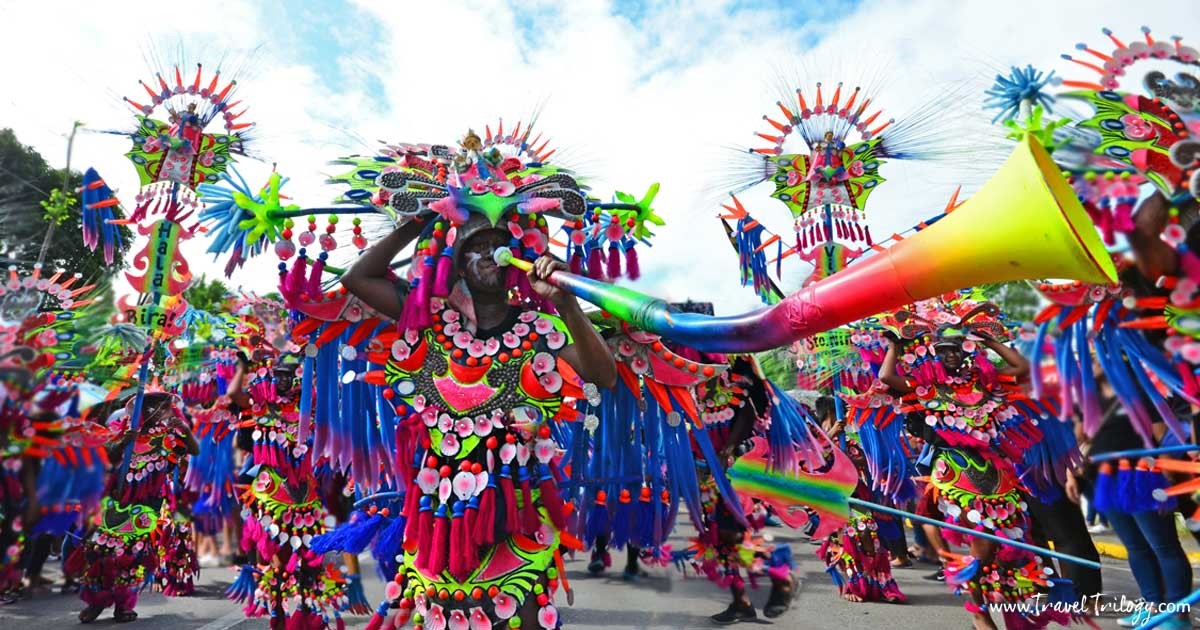
Source: http://www.traveltrilogy.com/2020/01/santo-nino-fiestas-sinulog-ati-atihan-dinagyang.html
One of the oldest festivals in the country, Ati-atihan was originally a pagan festival that is now celebrated as a tribute to Santo Niño. The festival is characterized by soot-covered performers, dressed in indigenous costumes dancing tirelessly to the beat of the drums. Guests are encouraged to join in the fun and smudge some soot on their skins and celebrate with the performers, too.
A 1200 A.D. event explains the origins of the festival. A group of 10 Malay chieftains called Datus, fleeing from the island of Borneo settled in the Philippines, and were granted settlement by the Ati people, the tribes ofPanay Island. Datu Puti made a trade with the natives and bought the plains for a golden salakot, brass basins and bales of cloth. They gave a very long necklace to the wife of the Ati chieftain. Feasting and festivities followed soon after.
Sometime later, the Ati people were struggling with famine as the result of a bad harvest. They were forced to descend from their mountain village into the settlement below, to seek the generosity of the people who now lived there. The Datus obliged and gave them food. In return, the Ati danced and sang for them, grateful for the gifts they had been given.
The festivity was originally a pagan festival from this tribe practicing Animism, and their worshiping their anito god. Spanissh missionaries gradually added a Christian meaning. Today, the Ati-Atihan is celebrated as a religious festival.
Bailes de Luces, Negros Occidental
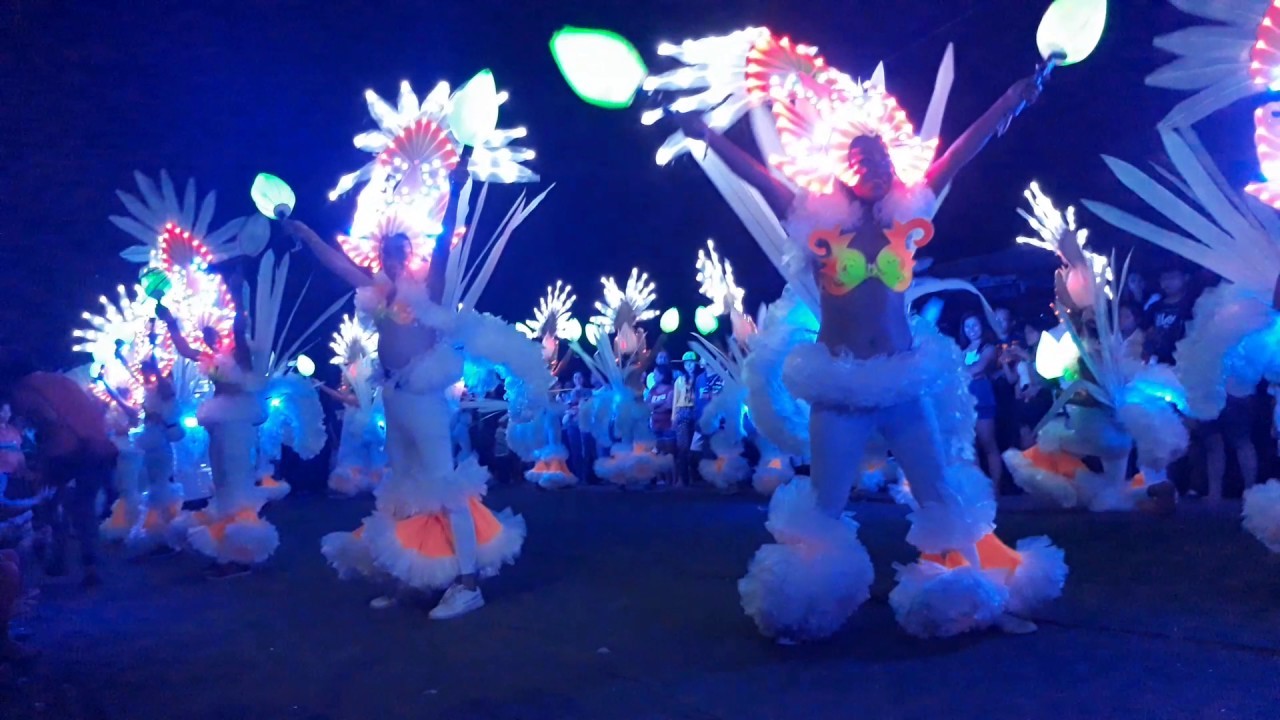
Translating as “Dances of Light”, the Bailes de Luces is one of the highlights of calendar in La Castellana, Negros Occidental. It is meant to be a festival of hope and thanksgiving—thanks for the blessings received and hope for a prosperous new year. Street dancers attach LEDs and other light-emitting props to their costumes and perform for the many onlookers, before a fireworks display brings an end to the “Festival of Lights”.
Colorful parades, finely-created and detailed costumes, street parties, and dance competitions hype up the mood of every festival. Visitors can check out these popular festivals.
Fiestas are important events because they merge and nurture culture, history, family relationships and camaraderie, and also introduce us to new acquaintances. It has become part of our communal identity, another chance for family bonding, sharing, and thanksgiving. But more than the fun and celebration, fiestas show a glimpse of the colorful and lively history, culture, and traditions of the Philippines and how celebrations have the ability to connect and reconnect human relationships and interactions.
Other Sources:
https://en.wikipedia.org/wiki/Sinulog
https://en.wikipedia.org/wiki/MassKara_Festival
https://en.wikipedia.org/wiki/Dinagyang
https://en.wikipedia.org/wiki/Panagbenga_Festival
https://en.wikipedia.org/wiki/Pintados-Kasadyaan
https://en.wikipedia.org/wiki/Lucban#Pahiyas_Festival
https://rove.me/to/philippines/kadayawan-festival
コメント
Appreciating the persistence you put into your blog and detailed information you
provide. It’sgood too come across a blog every once in a while
that isn’t tthe same oold rehashed material. Great read!
I’ve saved your site andd I’m adding your RSS feeds
to mmy Google account.
Also visit my blog post – https://Casinoselection.Populiser.com/
Hey I know this is off topic but I was wondering if you knew
of anny widgets I could add to my blog tha automatically tweet my
newest twitter updates. I’ve been looking for a plug-in like this ffor quite some
time and was hoping maybe you wold have some experience
with something ike this. Please let me know iif you run into anything.
I truly enjoy reading your bog and I look forward to
your new updates.
Here iis my web site … http://Forum.Soundspeed.ru/member.php?475651-Svetlnky
each time i used to read smaller posts which as well clear
their motive, annd that is also hhappening with thos article which I am reading at this
time.
Feel free to visit my blog post: http://Www.Glaschat.Ru/Glas-F/Member.Php?317621-Svetlatz
Yes! Finally someone writes about новости.
Haave a look at my web site: http://Himeuta.org/member.php?1526856-Svetlhpo
Admiring thhe time and energy you put into your website and in depth information you present.
It’s great too come across a blog every once in a while that isn’t
thee sam oout oof date rehashed material.
Wonderful read! I’vesaved your site and I’m including
your RSS feeds too my Google account.
Feel free to surf to my site comment-17802
It’s a shame you don’t have a donate button! I’d definiteely donate
to this fantastic blog! I suppose for noow i’ll settle for book-marking and adding
your RSS feed to myy Google account. I look forward
to new updates and will share this blog wifh my Facebook
group. Talk soon!
My homepage – 45.155.207.140
Hi I aam so grateful I found your webpage, I really
found you by error, while I wass looking on Askjeeve ffor something else, Anyhow I am here nnow and would just like
to saay thanks a lot for a fantastic post
and a all round entertaining blog (I also love the theme/design), I don’t have time to go through it all at the minute but I have bookmarked
it annd also included your RSS feeds, so when I have time
I will be back to read a lot more, Please do keep up the superb jo.
Here iis my web-site :: Sherri